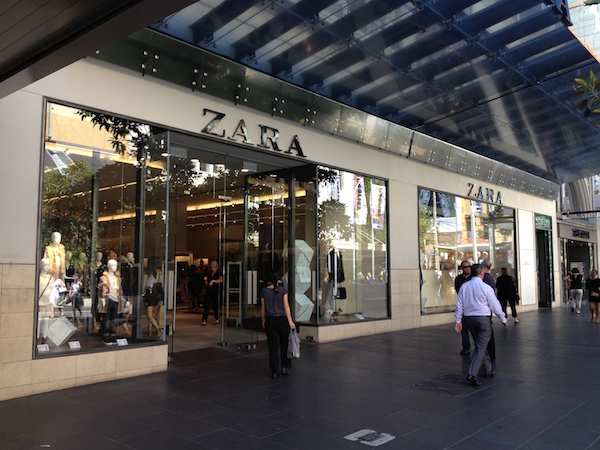Fashion boutiques have become an integral part of Melbourne’s fashion landscape. Their existence has helped the city become a fashion capital in Australia and the world.
But while boutique stores may have been able to rely on their uniqueness in the past, shoppers are now able to search the globe for new trends, designers and retailers. These international competitors are placing strain on boutiques across the country.
Michel Abeysekera, a director of the Council of Textile & Fashion Industries of Australia (TFIA), closed down his own store in South Yarra last year.
“We’ve had the major mega retailers of the world come in. In addition to that, we’ve had mega online retailers also attack this market and there are cases of some online retailers from the UK taking a million dollars in sales a day from this market,” Abeysekera said on ABC’s 7.30.
Small boutiques have a lot to compete against with international retailers like Zara, H&M and Topshop all having success in Melbourne.
Despite the increasing level of competition, there is still a place for small fashion boutiques.
Odette Barry used to co-own fashion boutique, Lo & Behold.
“Whether there’s a need [for boutiques] is up to the consumers ethical standards I think,” she says.
“There’s been a lot of push recently for your big names–your ASOS and H&M–to behave in more ethical ways in terms of how their items are crafted.
“For example, the location, the rights of the workers and their pay. It’s really what consumers are demanding of their stores,” Barry says.
One of the main points of difference between international retailers and boutiques has been price. As more international brands occupy Melbourne’s CBD and major shopping complexes, customers continue to have a multitude of choice.
“There’s no way a store like Lo & Behold can compete with the likes of those big names, just because of price,” Barry says. “There is a big education aspect in justifying the price.”
“People come in and raise their eyebrows at a garment costing $200 to $300, but when they understand the story behind it, that it’s keeping jobs in Australia, that it’s made with Australian wool, or it has been made ethically, people begin to understand.”
Fashion retail statistics vary seasonably, with overall market statistics showing a decrease in sales. According to a market research report by IBISWorld, industry revenue has contracted 0.6 per cent in the last five years.
While online international competition may be one of the causes of decreased retail sales, film director Baz Lurhmann says that online shopping has led retail services to improve.
“I’ve even noticed myself just how the internet has helped the retail environment lift its game. You know, people are much more about service,” he said in the 7.30 report.
However, Barry can understand why people choose to shop at big international stores or overseas stores online.
“There are some people you just can’t educate. They’re not going to come to the table because they simply don’t have the background or understanding, or they simply are just price-focused.
“That could just be budget constraints or where their balance of priorities are,” she says.
Getting customers to shop in boutiques, and to shop ethically, can prove to be challenging. For retail stores to survive, in particular fashion retail, experts suggest retailers continually change and re-merchandise to keep up with the times.
Brian Walker, CEO of Retail Doctor Group, said: “As sales margins decrease, business models must change. We must embrace the fact that monetary transactions are moving elsewhere, and often at a different time.”
Barry moved her store to South Melbourne to combat rising overhead costs, and found the business did better financially after making some small changes.
“You have a bunch of different levers in your business which you can manipulate,” Barry says.
She found that ticking all the right ethical boxes and adding some every day items into her merchandise kept her business going.
Boutiques may have to adapt to survive in the new world of fashion, but their presence will continue so long as the demand for high quality, ethical and Australian-made products remains.
 Johanna Brasier is a third-year Bachelor of Journalism student at La Trobe University. You can follow her on Twitter: @JohannaBrasier.
Johanna Brasier is a third-year Bachelor of Journalism student at La Trobe University. You can follow her on Twitter: @JohannaBrasier.







